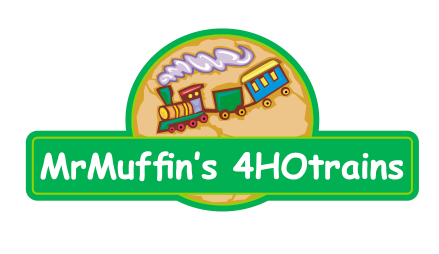MTH HO 80-3216-5 - S 3/6 Express Steam Locomotive "KBayStsB" #3641 w/ PS3E+
MTH HO 80-3216-5 - S 3/6 Express Steam Locomotive "KBayStsB" #3641 w/ PS3E+
SKU:80-3216-5
Couldn't load pickup availability
| Announced Date: | N/A |
| Released Date: | April 2024 |
| Individually Boxed: | N/A |
- Road Name: KBayStsB (Era I, Green w/Red Wheels)
- Road Number: 3641
- Product Line: MTH HO
- Scale: HO Scale
Features:
- Die-Cast Metal Chassis
- Authentic Paint Scheme
- Metal Wheels and Axles
- Constant Voltage Headlight
- Die-Cast Truck Sides
- Engineer and Fireman Figures
- Operating Firebox Glow
- Metal Handrails and Decorative Bell
- Decorative Metal Whistle
- Operating Marker Lights
- Lighted Cab Interior
- Synchronized Puffing ProtoSmoker System
- Operating Tender Back-up Light
- Locomotive Speed Control In Scale MPH Increments
- Die-Cast Boiler and Chassis
- Die-Cast Tender Body
- Precision Flywheel Equipped Motor
- Wireless Drawbar
- NEM 310/311 Fine Scale Wheels
- European NEM Fine Scale Couplers Included
- NEM 365 Coupler Pocket
- NEM 362 Lenzr Compatible Coupler Included
- CE Rated
- Sprung Bumpers
- 1:87 Scale Proportions
- Proto-Sound 3.0 With The Digital Command System Featuring: Quillable Whistle With Passenger Station Proto-Effects
- Proto-Sound 3.0 equipped locomotives can be controlled in command mode with any DCC compliant command control system. While the user won't have access to all of the incredible features of Proto-Sound 3.0, independent control over the locomotive is possible. This means you can continue to use your existing DCC controller to independently control your other DCC equipped locomotives in addition to your Proto-Sound 3.0 locomotive on the same track at the same time.
- When using a DCC controller, the following Proto-Sound 3.0 locomotive features are accessible:
- (F0) Headlight on/off
- (F1) Bell on/off
- (F2) Whistle/Horn on/off
- (F3) Start-up/Shut-down
- (F4) PFA initiate and advance
- (F5) Cab Light on/off
- (F6) Engine Sounds on/off
- (F7) Volume low, med, high, off
- (F8) Smoke on/off
- (F9) Forward Signal Sound
- (F10) Reverse Signal Sound
- (F11) Coupler Slack Sound
- (F12) Grade Crossing
- (F13) One-Shot Doppler on/off
- (F14) Extended Start Up
- (F15) Extended Shut Down
- (F16) Labor Chuff
- (F17) Drift Chuff
- (F18) Smoke Volume low, med, high
- (F19) Single short whistle toot
- (F20) Coupler Close
- (F21) Feature Reset
- (F22) Idle Sequence 1
- (F23) Idle Sequence 2
- (F24) Idle Sequence 3
- (F25) Idle Sequence 4
- (F26) Brakes auto/off
- (F27) Cab Chatter auto/off
- (F28) Clickety-Clack auto/off
- Proto-Sound 3.0 With The Digital Command System Featuring: Quillable Whistle With Passenger Station Proto-Effects
- Unit Measures:
- Only Operates On HO Stud (3-rail) Track (ie: Marklin C or K Track)
- Operates On R1 (360mm) Radius Curves
Overview:
In 1871, Germany became the last major European country to unify, combining a hodgepodge of kingdoms and duchies. But it would be another 50 years before the 11 provincial railroads were nationalized into the German Imperial Railway Company (DRG, with the logo DR). In the meantime, each road continued to develop its own locomotive designs. One of the best was the Class S 3/6 of the Royal Bavarian State Railways (abbreviated K. Bay. Sts. B. in German).
Regarded by European enthusiasts as one of the most beautiful and successful of all steam locomotives, the Class S 3/6 ("S" for schnellzuglok, indicating an express passenger engine, and 3/6 to indicate 3 powered axles, 6 axles total) was built by A G Maffei beginning in 1908 and showcased the talent of that firm's chief designer, Heinrich Leppla. The stylish conical smokebox front of the S 3/6 was complemented by a handsome holly green paint scheme. Two inboard high pressure cylinders and two outboard low pressure cylinders drove the center axle. The S 3/6 was one of the first European engines to follow the American practice of casting the cylinders and smoke box saddle as one huge casting, which gave the engine a distinctive look. The majority of the class were fitted with 74" drivers to conquer Bavaria's mountainous terrain. A smaller group of S 3/6 engines, however, was built with 79" drivers for high-speed service on flatter routes and acquired the nickname "High Steppers."
After nationalization in 1920, the engines were painted in the black and red Deutsche Reichsbahn (DR) scheme and became classes 18.3 through 18.5. While the DR intended to develop new standard engines of its own, the S 3/6 was deemed so good that the DR continued to order new engines of this 1908 design through 1931. The relatively light axle loading of the S 3/6, 18 tons, was also a plus, as the DR was behind schedule in upgrading main lines to its new 20-ton standard. So successful were the Bavarian Pacifics that they were chosen over more modern power to lead the glorious cream and blue Rheingold Express on part of its scenic route down the Rhine Valley, both before and after WWII. An S 3/6 could also be seen often on the point of the Orient Express.
Even after World War II, the aging engines continued to be great performers. A large number were modernized with new boilers and became the most economical steamers on the Deutsche Bundesbahn (DB), the new name for West Germany's railroad system. By the 1960s however, the S 3/6 class, which originally numbered 159 locomotives, had been retired, with a number of engines preserved in museums or in operating condition. New for 2010, M.T.H. introduces this superbly detailed, smooth running model of one of Europe's favorite steam engines, offered in original Royal Bavarian paint schemes and post-nationalization black and red.


